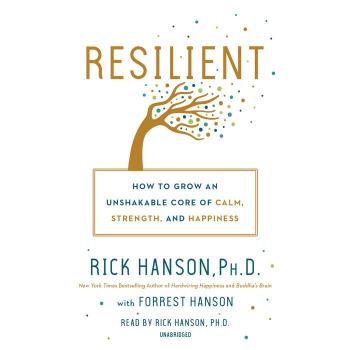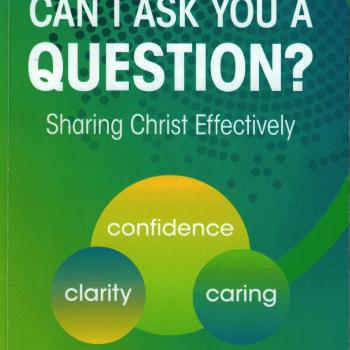Seven Stories by Anthony W. Bartlett
Seven Stories by Anthony W. Bartlett shares how to study and teach the nonviolent Bible. The book is meant to used as a Bible study or for personal reflection. The method of Bible study relies heavily on the anthropology of René Girard. Girard’s thought occurs in three stages. In the first stage, one is taught what to desire. During the second stage, one becomes the scapegoat and sacrifice due to human violence. With the third and final stage, the victim uses forgiveness as a non-violent method for the atonement of the people.
In these seven stories, Bartlett states that Girard’s thought encourages a progressive revelation of God’s true non-violent nature. Each chapter or “story” in this book reveals a shift in the Biblical understanding and meaning of God’s nature and the purpose of Jesus’ death on the cross and His resurrection. The key to interpretation is to view the Bible from the point of view of the victim. This is the key to seeing a non-violent method of atonement.
Story 1: Oppression to Justice
This story is set to change the concept of the Hebrews, from a race of people descended genetically from Abraham, Isaac, and Jacob, to a dispossessed social class among whom the revelation of a God of justice first appeared. As Bartlett states:
“The God of the Bible wishes to bring freedom, justice, truth, peace, and life to humanity, beginning with those most evidently deprived of these things.”
Bartlett examines parallels between the Ten Commandments and the Sermon on the Mount. In this new reading, the Ten Commandments are proscriptive. Yet, the Beatitudes of Jesus are consequential (59).
Story 2: Violence to Forgiveness
This story focuses on how the first chapters of Genesis describe what they see to be the main problem associated with the human condition. Each of the pre-histories in Genesis (from the Garden to Babel) are stories of crisis, in which God shows the solution (71). For example, Bartlett compares the Garden of Eden story with the Cain and Abel story. He suggests that they should be read together because they prove the right way of to interpret the book (73-74).
“The stories read together to show how rivalry and desire result in violence and alienation and this problem lies at the heart of the human condition. Separating out the Garden story makes it a human doom with only a legal waiver as a solution, rather than an anthropological condition needing to be healed.”
If Chapters 2–11 of Genesis lay out the problem, then the stories of the patriarchs (Abraham, Isaac, Jacob, and Joseph) point the way to the solution. Jesus uses the figure of Abel and prophets who have been murdered. He is concerned with the human condition of violence and its generative anthropology of killing (Luke 11:49-51) (87). The story of Jacob and Esau (Genesis 25:22-25, Genesis 27:27-45, Genesis 32:3-23, Genesis 32:24-31, Genesis 33:1-10) is compared to the Prodigal Son (Luke 15:11-32). They both illustrate the theme of forgiveness of violence.
Story 3: The Land and its Loss
The exodus and the exile were the cardinal events that formed the Jewish identity and sense of self. Bartlett states (112) that “If the overall vision of the Seven Stories is right — that there are a series of revolutionary shifts in meaning in the Bible leading to human transformation — then the land (and Temple) provide the protective layer, allowing the seed time to grow.”
Story 4: Wrath to Compassion
As one reads the Bible progressively, one sees a shift in the understanding of God from a wrathful God to a personal, compassionate God (122). Instead of wrath coming from a vengeful God, violence becomes a form of justice. God, like an impartial umpire, administrates distributive justice.
Story 5: Victim to Vindication
Job shows us the shift from victim to vindication. In this way, the Bible goes from a history class to a psychology class. Another way that the Bible shifts from victim to vindication is in the meaning of a “redeemer.” The Redeemer is concerned with the victim. Jesus is, therefore, a God-man who comes to save us because He cares about us as victims of sin. He takes on the act of being our “victim” and forgives everyone so that may follow Jesus to a place of victory. This is in contrast to the traditional church “salvation-from-hell” reading (156). For Jesus, the victim becomes the pathway to a whole new way of being human (164).
Story 6: The Temple and its Destruction
Forgiveness and compassion, according to Bartlett, “are so fragile — non-foundational and directly relational — in comparison to violence” (174). Therefore, the land and the temple become “containers.” This vision of nonviolence is grown within these “containers.” Jesus, during His ministry, would render the Temple and its sacrificial system’s existence obsolete (186).
Story 7: History to Its End
Bartlett shows that Jesus solved the problem that the wisdom literature of the Old Testament presented. Jesus provides a way to end the violent way. He replaces the ritual of the sacrifice with this symbol of His life and death. He replaces the sacrificed animal with bread and wine. The Lord’s Supper becomes a non-violent reminder of Jesus’ death (190).
Bartlett leads an organization (Wood Hath Hope) which continues to explore this unique theology. Seven Stories shows an interesting way to see the progressive revelation in the Bible. The book also resolves the “angry” God and “nice” Jesus contradiction that many people see in the Bible. Still, it is hard for me to reconcile using Girard’s third stage to understand how the work of Jesus Christ on the cross is a nonviolent form of atonement. Yet, this book is worth reading. The book will expose the reader to a uniquely different take on the purpose of the Bible.
Anthony Bartlett is online and on Facebook. You can buy this book on Amazon.
Disclosure of Material Connection: I received this book free from the author and/or publisher through the Speakeasy blogging book review network. I was not required to write a positive review. The opinions I have expressed are my own. I am disclosing this in accordance with the Federal Trade Commission’s 16 CFR,Part 255.













